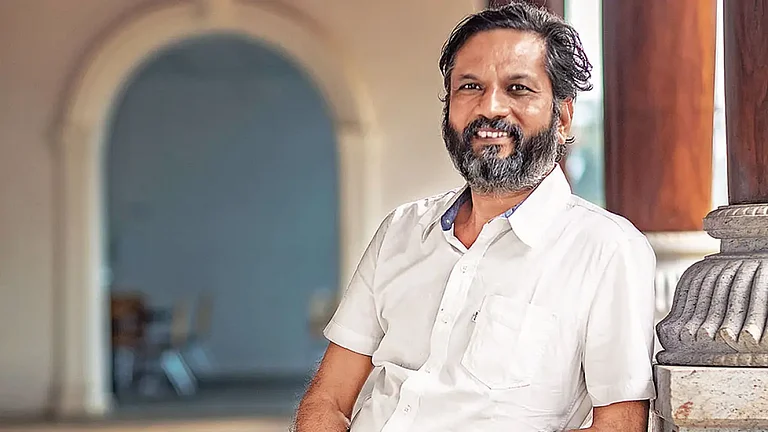A few days ago on a visit to Indore, I was pleased to see the city transformed from what I could recollect from an earlier visit almost a decade ago. My curiosity was soaring as I left the airport in an Uber, which picked the location I was planning to visit on a predictive mode, even as I started typing. I was visiting the Wittyfeed office, which was located in the high floors of a modern commercial complex, which could have passed off as one in Delhi-NCR or Mumbai or any of the other metros.
In the midst of 100 odd youngsters with an average age of 24, the energy levels were palpable. For almost all of them, this was their first job and it was ironical that a majority of them were not from Indore. Surely, something interesting was going on in Bharat, which needs further looking into, but that is for another time. Over my longer than expected stay, I got chatting with the founders, who provided me with a lot of information on how low cost, high talent and ease of operating from this city was making their venture a lot more profitable.
I was please with my visit to the Wittyfeed office. On my way out of the office, it struck me as to how over 100 youngsters had found employment and many more are likely to join this company in the coming days. I was so taken by the job prospects that I started to doubt the rising unemployment reports in recent times. As I got into the cab back to the airport, I started chatting with my cab driver after a brief stop-over at the famous 56 Dukan, street food joint. Actually, the market too had changed from what I remembered. Here too, the crowd was young, there were very few families and generally the open space had shrunk.
I asked the cabbie how the development work was helping him. This is when the starkness of things started to emerge when he mentioned about his job loss at a private firm, because they were winding up operations. He was left with little choice but to start driving a cab. His is an interesting story – a qualified lecturer teaching in a private university, where admissions had started to dwindle in the past few years resulting in cost cutting on staff, was laid off. The fact that he was in his mid 40s was of no concern to the management.
Worrying middle ages
Three years ago, during the 2014 election campaign, the BJP’s then Prime Ministerial candidate, Narendra Modi, had made several fervent appeals to the young, first time voters that his government would work towards providing jobs to new entrants in India’s labour market. At many places he would state, “I can’t do much about those in their 50s but I want to transform the lives of those in their 20s who are seeking new employment.” That prophecy is coming true and will hit hard everyone – not just those entering their 50s.
Smart Indians have picked up several unwanted traits – be it over dependence on technology in every aspect of our lives. In the process our lifestyle-related consumption too has gone up significantly. The going is good for this kind of consumption, as long as one’s earnings are commensurate with the rise in consumption. But, when that does not happen, the savings rates dip. Imagine the combined effect of high inflation, low guaranteed returns and lower overall savings? It is a recipe for disaster in the making.
There are many cities, where in the name of development one generation is not just dipping into their current savings for their consumption need, but at the same time digging up a future in poverty. While this segment of the population has adapted to a greater consumption, it has not changed its savings and investment methods, which means they have a lot less money which is shrinking at a faster pace than inflation is growing.
In fact, many of them do not realise that inflation is rapidly eating into their savings. They have stuck with the archaic bank deposits and are content with guaranteed returns, without realising the fact that in reality, they are losing on their money.
Resource replacement
While talent and a young population at Wittyfeed are welcome, they too should worry about old age poverty, if they do not check on their expenses. Many of them live paycheque-to-paycheque, and are confident that their youth will take care of their future. Look around and it is clear that in several organisations the youth is making the slightly older redundant. The older lot are suddenly finding their working lives shortened and their future uncertain. This change puts tremendous pressure on their current and future finances.
The way to address these situations is to make sure that you are saving enough and investing what you save for it to beat inflation and retain value. Else, you will become victim of old age poverty. For those who cannot see how things will change in the future, let me explain with an example – Rs 1 lakh of 1990 at 8 per cent inflation is worth around Rs 11,000 today. So, those who are thinking about keeping their monies safe in fixed deposits with the belief that the capital is safe should think of the purchasing power of this money.
Strangely, using old technique to deploy monies was also prevalent among the youngsters at Wittyfeed; at least among those who were saving some money. My visit, I hope helps them follow what they have done so far – ride on technology to develop their skills. If they stick to the old beaten ways to save money, they too would face the perils of old age poverty that many of their parents are treading into or are likely to get into.


























